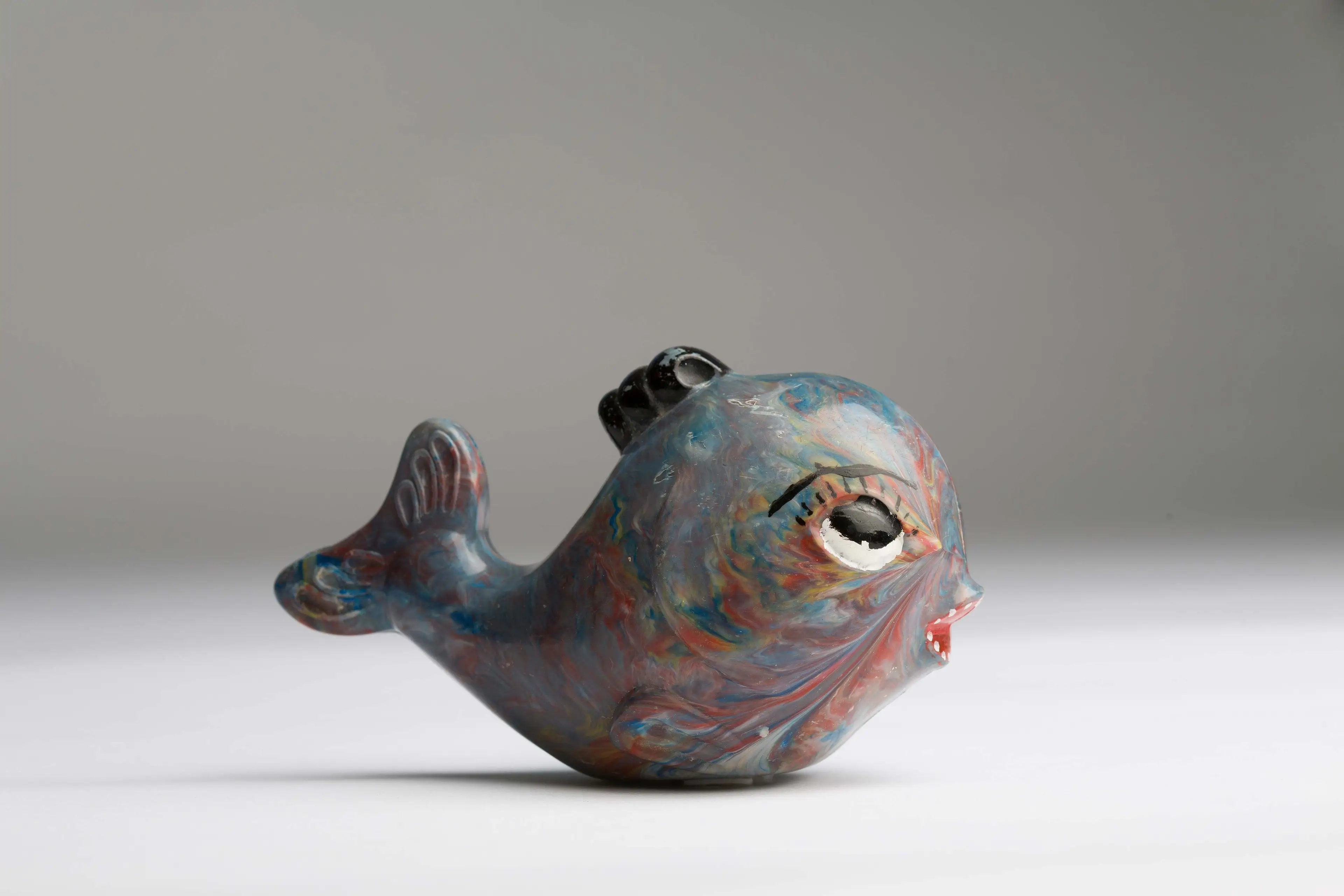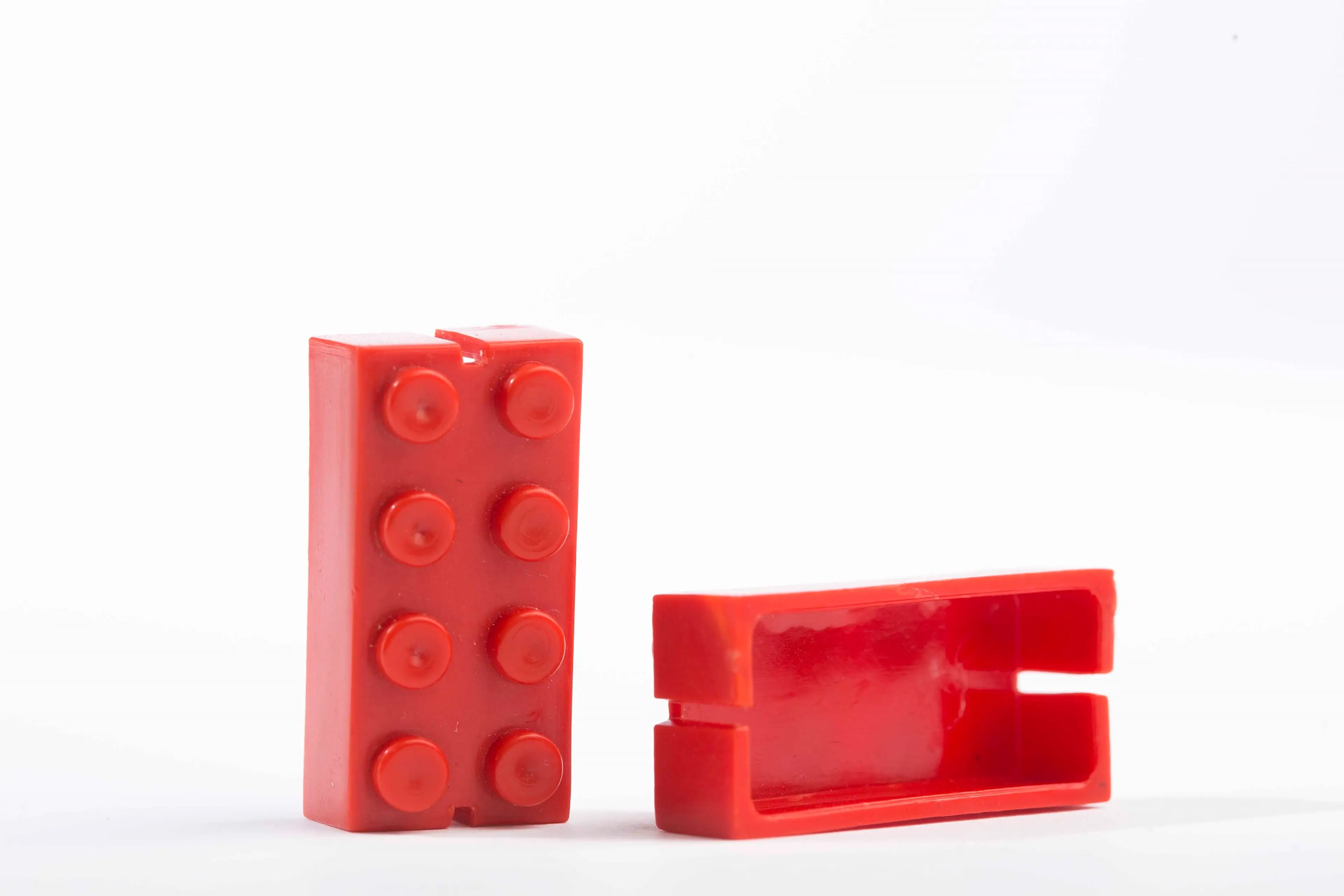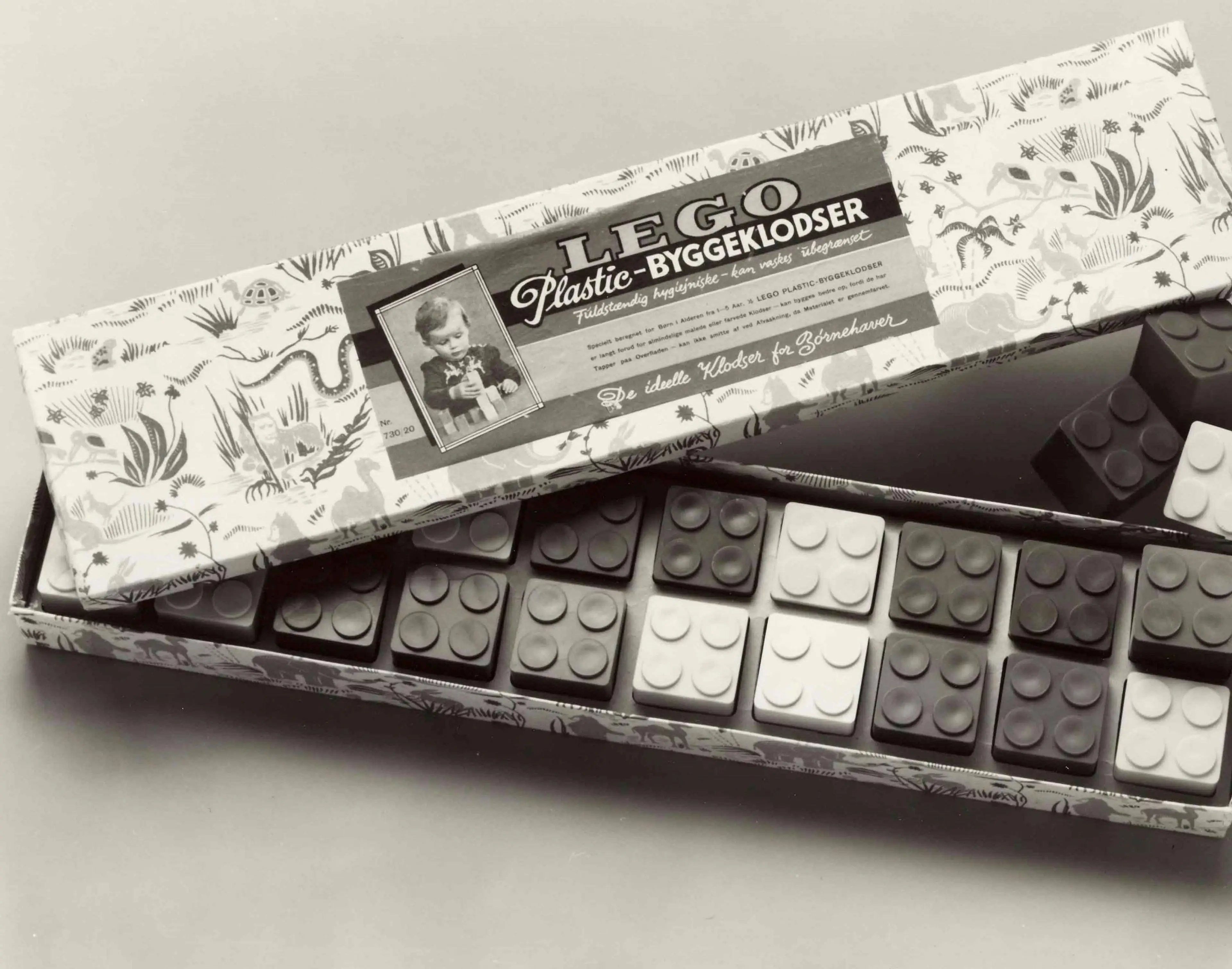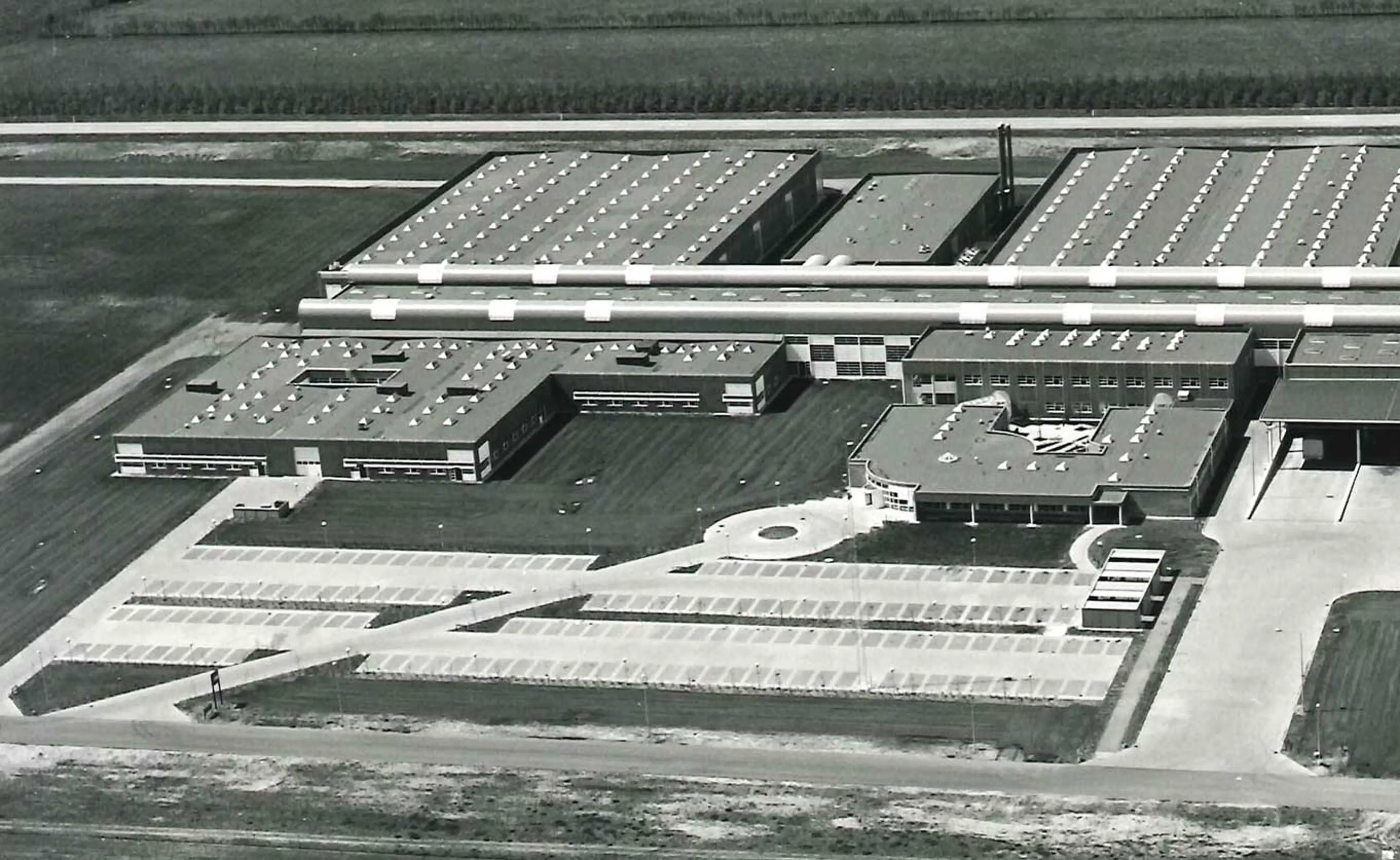By the end of World War II, Ole Kirk Kristiansen is finding it increasingly difficult to source beechwood of the right quality from South Stenderup Forest near Kolding. At the same time the post-war period presents industry with new options in modern plastics and technology. Ole Kirk Kristiansen commits to the new trend and invests in an expensive plastic injection-molding machine. In June 1946 Ole Kirk and other Danish toy manufacturers attend a demonstration in Copenhagen of an injection-molding machine. Ole Kirk is enthusiastic and places an order for a British machine, built by E.H. Windsor in London, through its Danish representative, Wilh. F. Hoffmann & Co. The British molding machine arrives in Billund in december 1947. Molding tools and raw materials are difficult to come by and much experiment is necessary in order to gain experience of the molding process. However, slow and steady and with cellulose acetate as its raw material, the LEGO Group moves into the plastic age.
-original.jpg?width=3840&quality=68&auto=webp&format=webply)
Plastic injection molding machine from the 1940s
Automatic Binding Bricks
In 1949, the first primitive plastic bricks are marketed under the name Automatic Binding Bricks – the forerunner of the LEGO brick we know today. The English name is in honor of the allied forces who liberated Europe in 1945. Ole Kirk Kristiansen’s sons all of whom are involved in the company in the late 1940s see plastic production as ruinous for the business. In a newspaper interview in 1949 Godtfred Kirk Christiansen is quoted as saying that “you can make nice, cute things in plastic – but wood is a stronger material”. They decide to face their father and persuade him to switch back exclusively to wood products. Ole Kirk Kristiansen’s response: “Have you no faith? Can’t you see? If we get this right, we can sell these bricks all over the world!”
.jpg?width=3840&quality=68&auto=webp&format=webply)
Automatic Binding Bricks
Changing name
In 1951, the name Automatic Binding Bricks is supplemented by the Danish name LEGO Mursten (literally LEGO bricks) because Godtfred Kirk Christiansen, who is now fully onboard the plastic train, wants to establish wider recognition of the LEGO name. Godtfred Kirk assumes more and more of the responsibility in the company up through the 1950s. In 1953, the name Automatic Binding Bricks is removed from the product, which in future will simply be called “LEGO Mursten”. That same year the LEGO name is molded into all bricks.
The LEGO Group looks abroad
Godtfred Kirk Christiansen contemplates how the toy market could develop once post-war import restrictions are lifted and what this could mean for exports. He begins to look beyond the Danish market, and the first step on the way to becoming a global enterprise is taken in Norway. In 1953, the LEGO Group signs a licensing agreement with a plastics manufacturer in Norway, where imports of toys are also restricted. The Norwegian company rents molding tools in Billund and soon production and sale of LEGO plastic products in Norway are off to a good start. Godtfred Kirk ends the agreement with the Norwegian plastics company in 1963 when Norway lifts its import restrictions. Instead, a Norwegian LEGO sales company is set up.
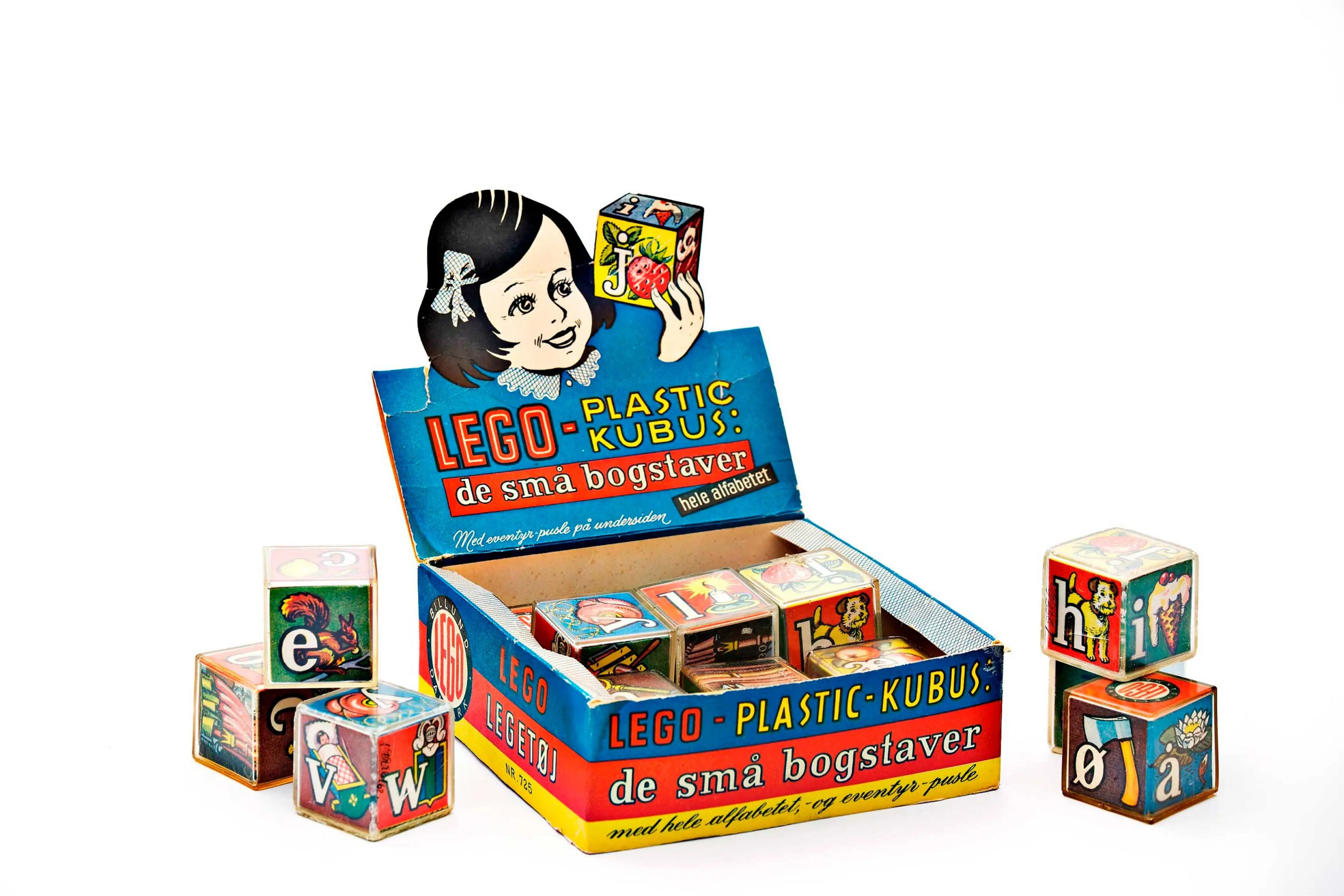
LEGO Kubus, product no. 725, manufactured from 1953 in Norway. © Niels Åge Skovbo/Fokus Foto

